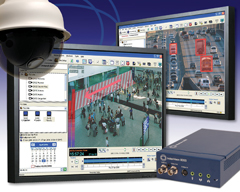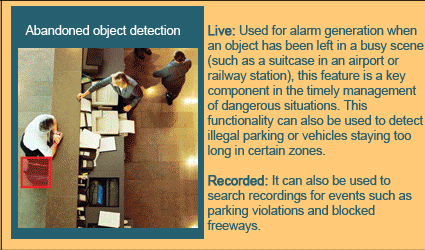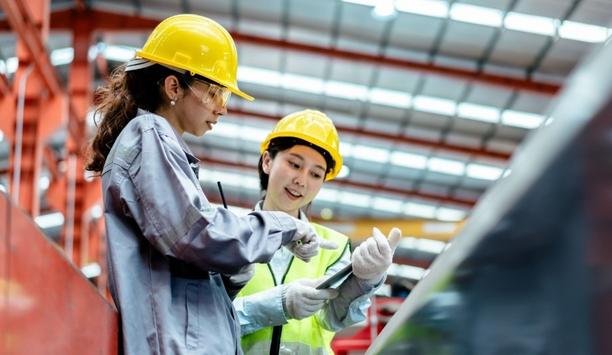In this article, Oliver Vellacott, CEO of IndigoVision, warns against setting too high an expectation for what video analytics can deliver.
Analytics will detect 'suspicious movement' from people walking along a street. Analytics will detect terrorists walking round a hillside a mile away. Analytics will pick an offender out from a sea of faces. These are just some of the misconceptions about analytics today. Was there ever a technology that was so 'over-promised and under-delivered'?
No. The reality is that analytics are still very much in their infancy. Expectation management is at the heart of the issue - being realistic with end users about what can be achieved. The fundamental problem is that as humans we do these tasks without even thinking about it. We read license plates and recognise faces totally subconsciously. It may have taken us years of learning during childhood to acquire these skills, but the fact is that we take them for granted.
Computers, on the other hand, lack even the basics of visual intelligence. They can perform some video analytic functions reliably, but often only by severely constraining the application. Qualification is everything, and setting the end user's expectations is absolutely vital.
Analytics today
So, what can be done today? License plate recognition has been around a long time and is well proven, however it is still not 100% accurate. Face recognition is notoriously difficult to perform reliably, and is extremely easy to fool by using disguises, and for them to work with any degree of accuracy an excellent headshot of the subject is required.
 There are, however, some bread-and-butter analytics functions which CAN be performed reasonably well today. Motion detection is the simplest, most basic form of analytics. Many manufacturers support it but very few systems achieve sufficiently low false alarm rates to be useable. A system, which generates anything in excess of 20 false alarms in a night, becomes ineffective, because all alarms very quickly become ignored or the motion detection gets switched off just to prevent the operator getting 'drowned in alarms'! Aesop unwittingly foresaw the reality of most security systems when he wrote The boy who cried Wolf.
There are, however, some bread-and-butter analytics functions which CAN be performed reasonably well today. Motion detection is the simplest, most basic form of analytics. Many manufacturers support it but very few systems achieve sufficiently low false alarm rates to be useable. A system, which generates anything in excess of 20 false alarms in a night, becomes ineffective, because all alarms very quickly become ignored or the motion detection gets switched off just to prevent the operator getting 'drowned in alarms'! Aesop unwittingly foresaw the reality of most security systems when he wrote The boy who cried Wolf.
Congestion detection has evolved from basic motion detection. When the density of humans or cars reaches a certain level an alarm is triggered. Counter flow looks for objects which move 'against the flow', and is valued in applications like airport security. Virtual tripwire is also a refinement of motion detection in that it triggers an alarm when someone or something 'breaks' a line that has been drawn in the image. This is useful in applications such as large areas with 'no go zones', such as in factories. People are allowed to happily move in 'free areas' but the system alarms as soon as any of them move out of these - see sidebar 'Analytics A to Z' (at end of this document).
With all these analytics applications, camera positioning, lens selection and lighting are absolutely critical. Just changing the camera position can easily improve the analytics performance by an order of magnitude. For example, in counter flow detection the algorithm has a far easier job if the camera is positioned pointing down so that it sees the area in 'plan view'. If it is looking from a perspective view - with human bodies occluding one another, the process of tracking people becomes much harder, and expectations can once again become unrealistic.
Crowded marketplace
There are literally hundreds of companies touting analytics software. As a manufacturer of complete IP Video solutions, IndigoVision gets approached by on average one analytics provider every week, asking us to integrate their product into our IP Video management platform. Why so many? Because any small software company can develop a suite of video analytics by buying a framegrabber, a powerful PC and writing some software.
These are then sold as separate, stand-alone systems, which sit 'next to' the main CCTV system. Video is split from the matrix and fed into the analytics system. This has the limitation that it is not truly integrated into the operation of the main CCTV system and therefore delivers only limited benefits. Analogue just doesn't really support integrated analytics. DVRs do to a greater extent, but they still remain largely 'islands', i.e. not integrated, just as with analogue CCTV.
![]() Integrated analytics - the IP video solution
Integrated analytics - the IP video solution
IP-based video management systems provide the ideal platform for powerful analytics to be completely integrated into the system, making them a core and integral part of its operation. Leading IP Video solutions support analytics that can be performed in two fundamental modes: live (to detect events as they occur) and post processing (to test various scenarios on recorded footage).
The optimum place to locate live analytics is obviously at the camera, as it is the only truly scalable solution and also doesn't use up network bandwidth. Central real time processing will eventually run out of steam, whereas every camera can have dedicated processing. For example a camera with built-in analytics can monitor scene activity and transmit only on specified events (e.g. a person moving the wrong way through airport security). This reduces unnecessary video traffic on the network, thus reducing the bandwidth requirements and simply cannot be done with traditional analogue.
The optimum place to locate post-processing analytics is obviously on a central server, so that recorded video can be searched many times, with different parameters. One of the biggest time wasters for operators used to be fast-forwarding and rewinding through VCR tape. It improved with DVRs, but most are still basically a digital fast forward or rewind. Analytics offers the potential to further transform this essential task by searching large amounts of recorded video for possible events and having the operator validate them. Computers do what they are good at - locating possible events - and humans do what they are good at - verifying those events.
Summary
Setting expectations is everything. It's important not to believe all the ridiculous hype and nonsense about what analytics can deliver. In 30 years time it will probably be possible, but today it's all about making sure that what is achievable is done extremely well.
The animation below depicts a series of scenarios in which video analytics might be used.

Dr Oliver Vellacott
CEO
IndigoVision Group plc




















